October 29th, 2024
12minute read
World War I forever changed the way wars would be fought.
Many of those early kites were often as dangerous to their pilots as they were to any prospective opponent.
No sooner had one man taken flight than another was committed to shooting him out of the sky.
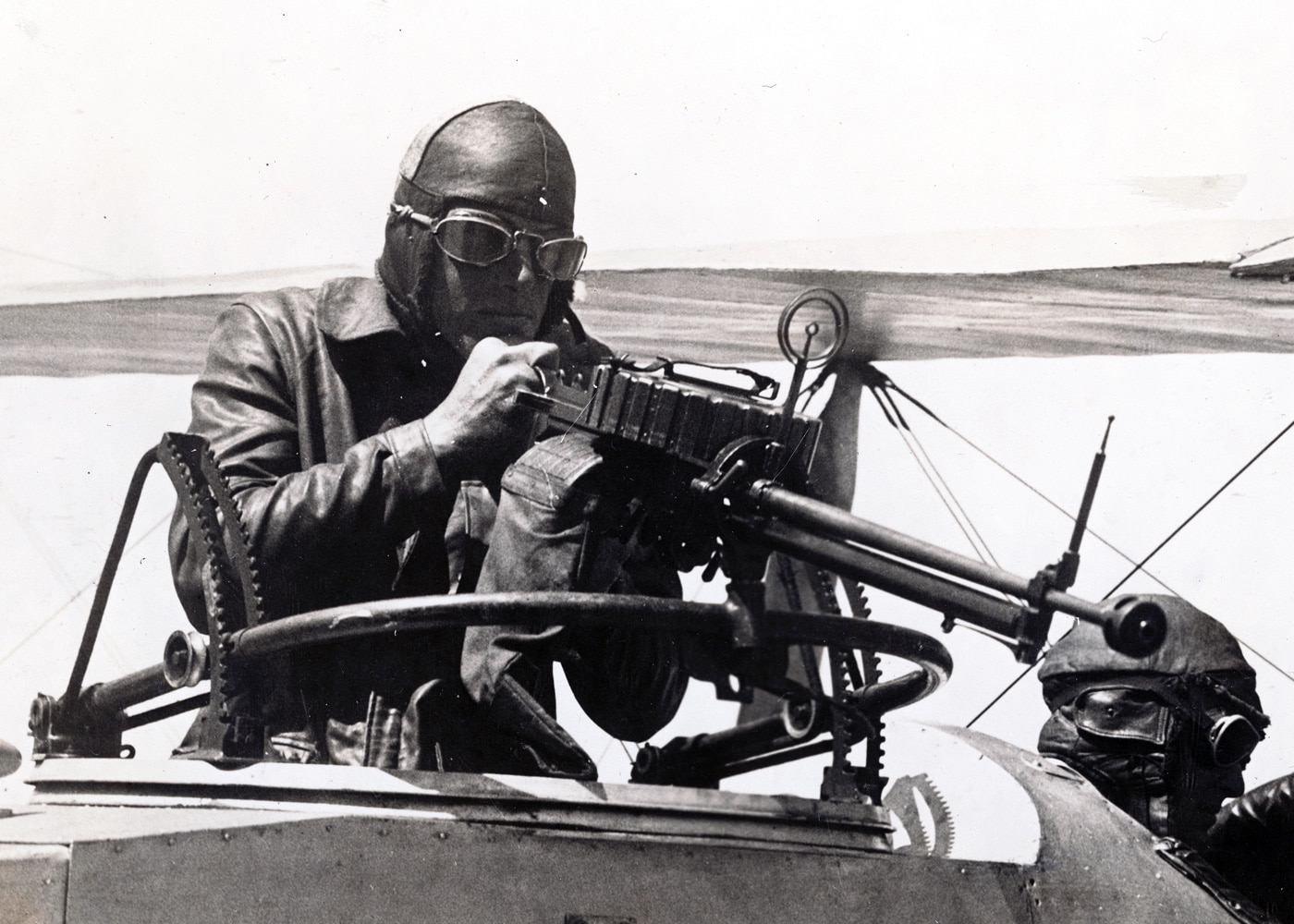
Shown here is a Lewis machine gun aboard a U.S. plane in 1918. It is mounted on a Scarff ring and equipped with a 97-round ammunition drum and a U.S. made muzzle brake/recoil check. Image: NARA
The stage was set for an aerial arms race.
In August 1912, America witnessed another first in military aviation.
weapon from an aircraft.
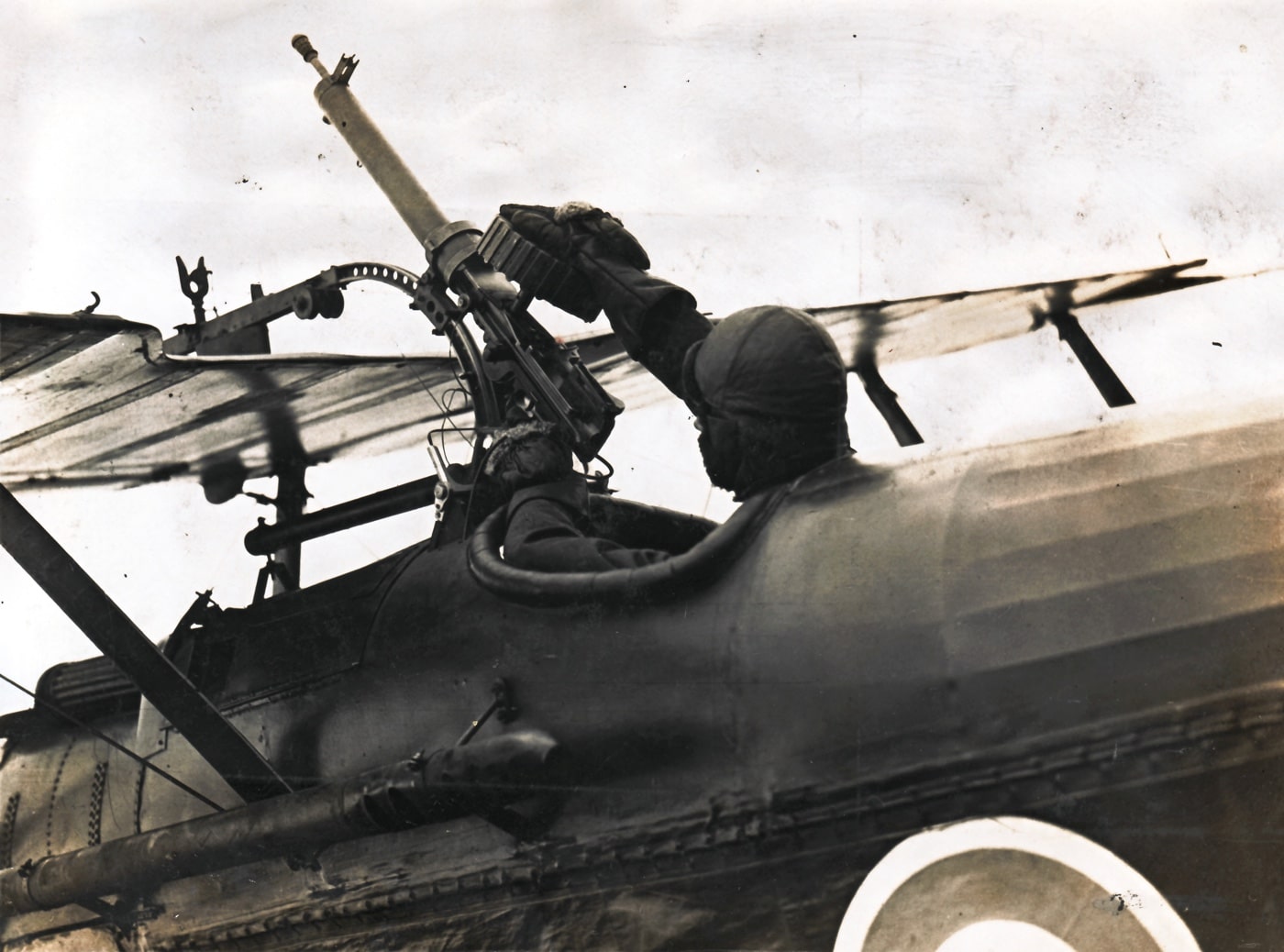
This Royal Aircraft Factory S.E.5 biplane was equipped with a synchronized Vickers machine gun and a Lewis gun in a Foster mount on the top wing. Image: Author’s collection
At the U.S. Armys Pilot Training School at College Park, Maryland, Lewis plan came to fruition.
The school Commandant, Captain DeForest Chandler, offered to perform the airborne Lewis gun demonstration personally.
[For more information, be sure to read Peter Sucius article on theLewis gun.]
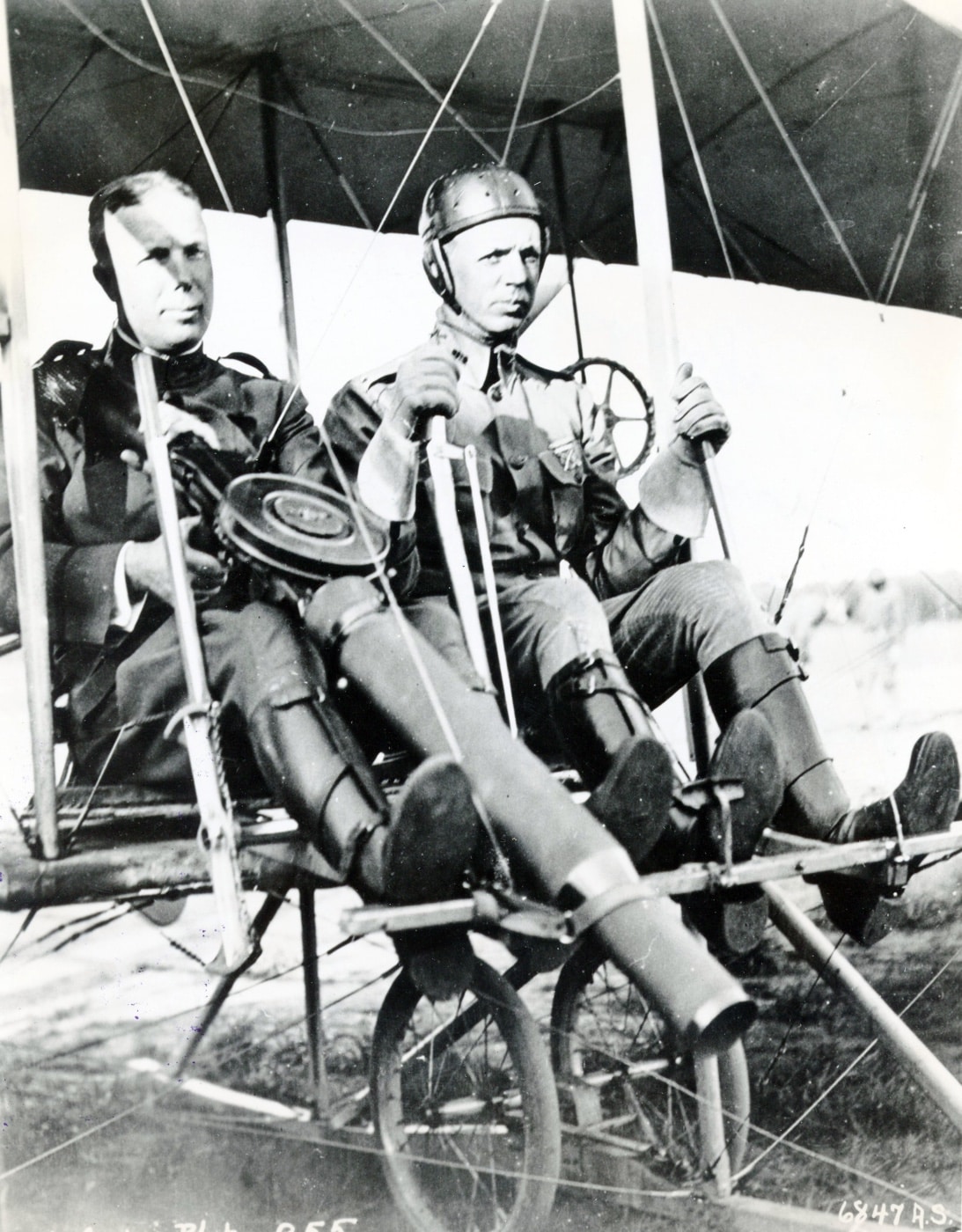
In the first documented use of a machine gun from the air, U.S. Army Capt. Charles deForest Chandler, fired one of the first Savage Arms-made Lewis guns on a test flight on June 7, 1912. Image: NARA
A 67 target made of cheesecloth was placed on some open ground near the rear of the hangar.
Three passes were made from about 250 feet, with Captain Chandler firing a short burst each time.
Chandler had no sight and could not see the impact of his rounds.
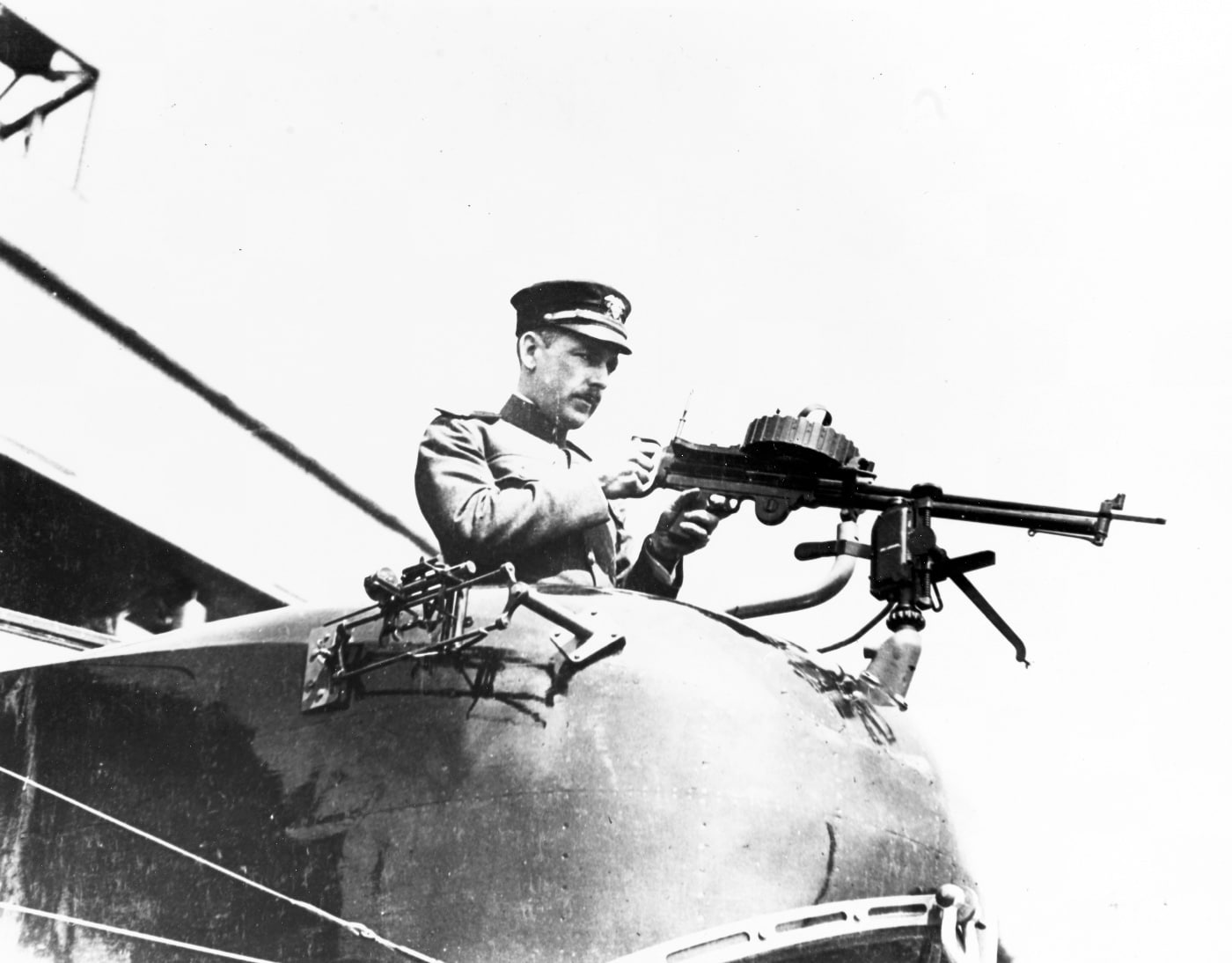
Lt. Arthur E.J. Male in the gunner’s bow position poses with a Lewis aircraft machine gun at the Naval Aircraft Factory in Philadelphia, Pennsylvania in March of 1918. Image: U.S. Navy
Suddenly, the aircraft and the machine gun were forever joined.
It would not be easy.
Meanwhile, the concept of a light machine gun was essentially unheard of.
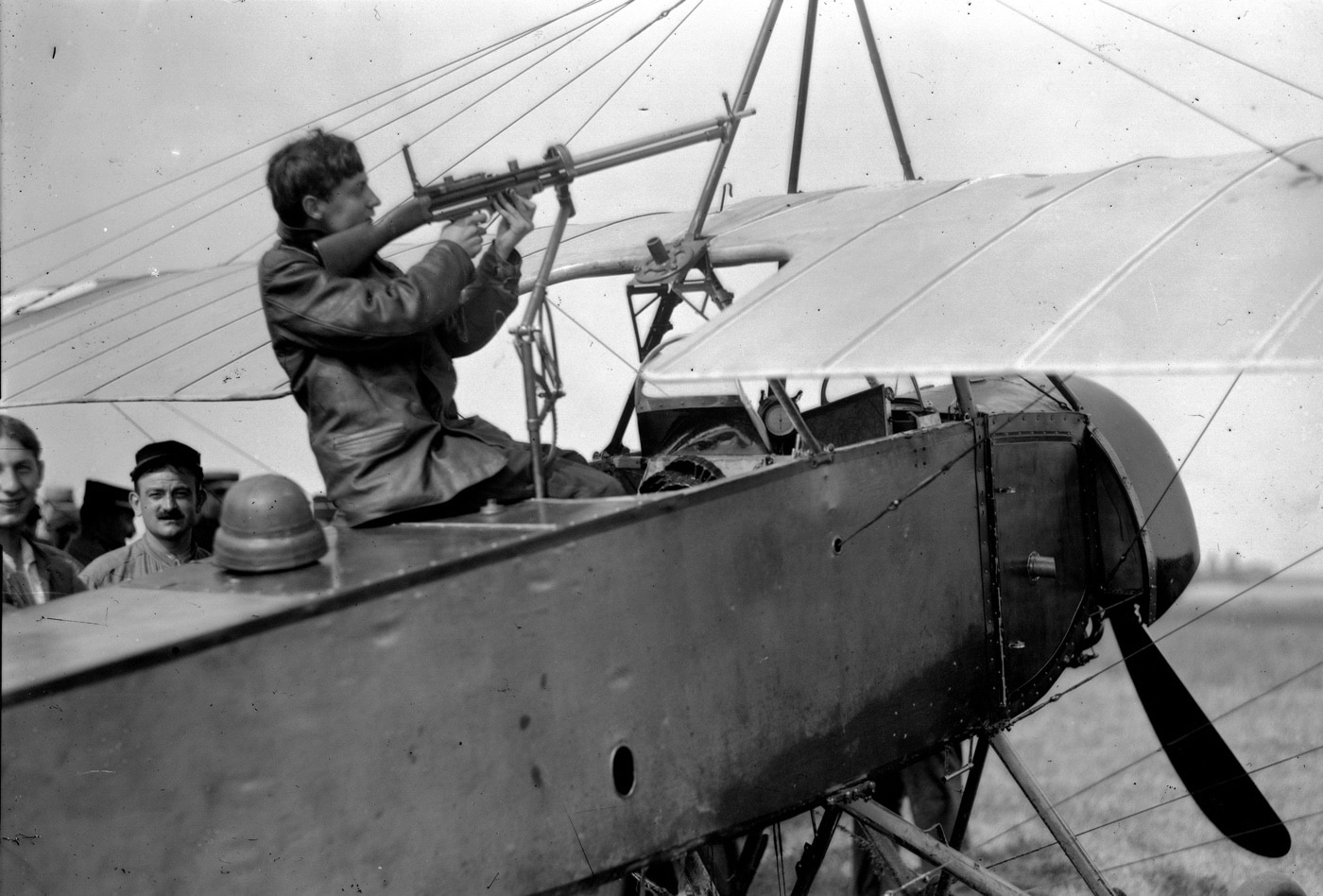
French ace Georges Guynemere demonstrates the use of a stripped Lewis gun mounted in a Morane Parasol monoplane. Image: Library of Congress
But the heavy, belt-fed infantry machine guns had not been designed with the needs of airmen in mind.
Before the invention of reliable synchronization gear, the observer in the rear cockpit was the primary gunner.
Most of the converted infantry guns were not workable solutions for the rear gunner.
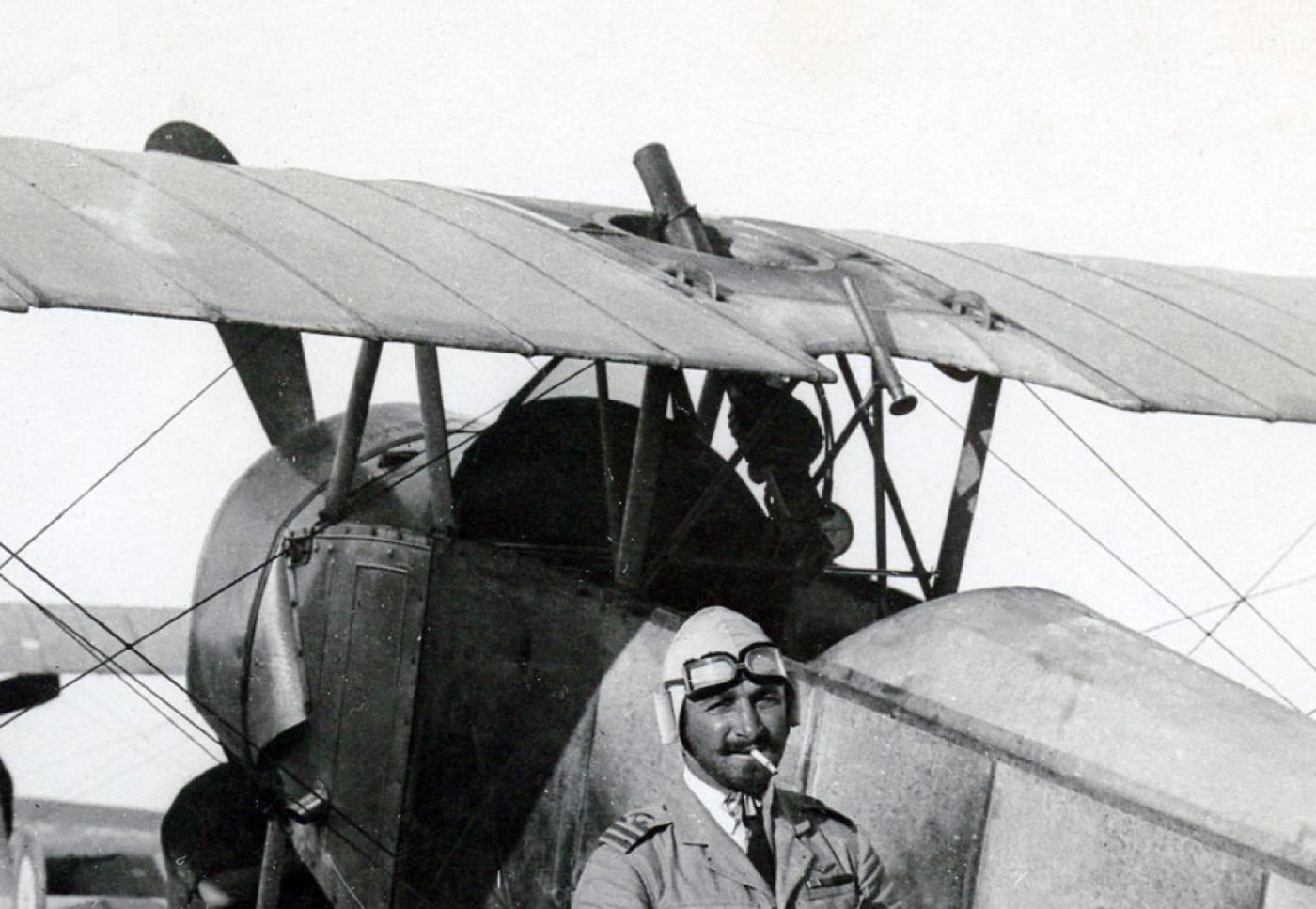
Forward-firing mounts were often awkward designs like this one on a Nieuport 10 flown by Charles Rumney Samson. Image: NARA
for the gun itself) aloft.
On the other hand, the Lewis was ready to take off.
In 1915, the basis British air gun, the Lewis Mk.
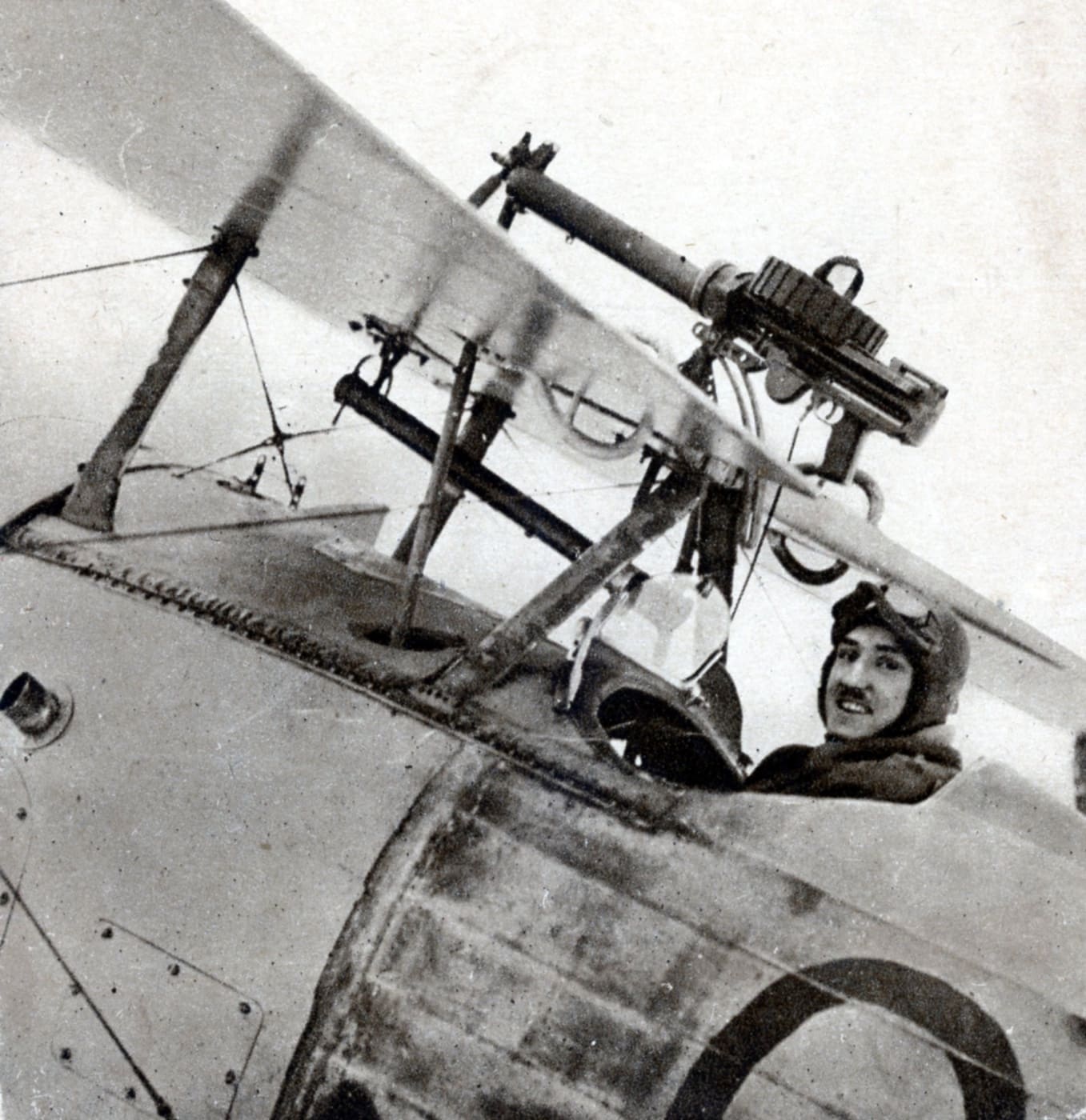
The Lewis gun was adapted to fire forward over the propeller arc as on this RFC Nieuport 27. The gun was fired by lanyard, and the muzzle was clamped down on the front pylon. Image: Author’s collection
I, became the standard light machine gun of the British Army.
In 1916, the RFC received the Lewis Mk.
The 47-round pan magazine would be upgraded with a 97-round drum made specifically for aircraft use.
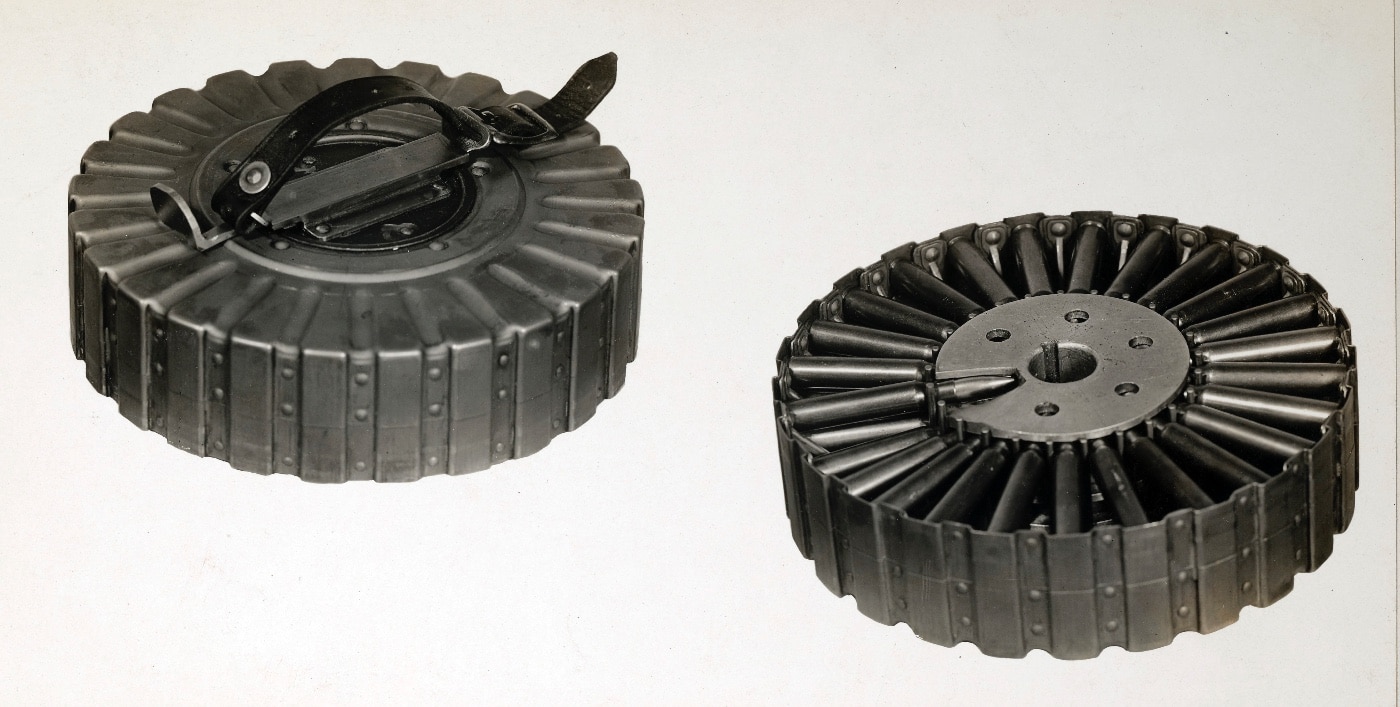
The 97-round drum magazine was designed for aircraft-mounted Lewis guns during World War I. Image: NARA
The open front nacelle of a pusher aircraft offered the pilot or gunner a completely unrestricted field of fire.
Unfortunately, this proved to be awkward.
The next innovation was to mount a Lewis gun on the top wing to fire forward above the propeller.

Using the Type N65 mount on a Nieport 17, the Lewis gun could be fired upwards at an angle. Some pilots perfected this method of the up-and-under attack. Image: Author’s collection
Reloading the magazine on a Lewis gun while flying and fighting required great coordination and cool nerves.
For the observer/gunner, the Lewis Gun was the best flexible weapon of the first air war.
The 97-round drum offered a reasonable ammunition load for the time, and the cyclic rate was sufficient.
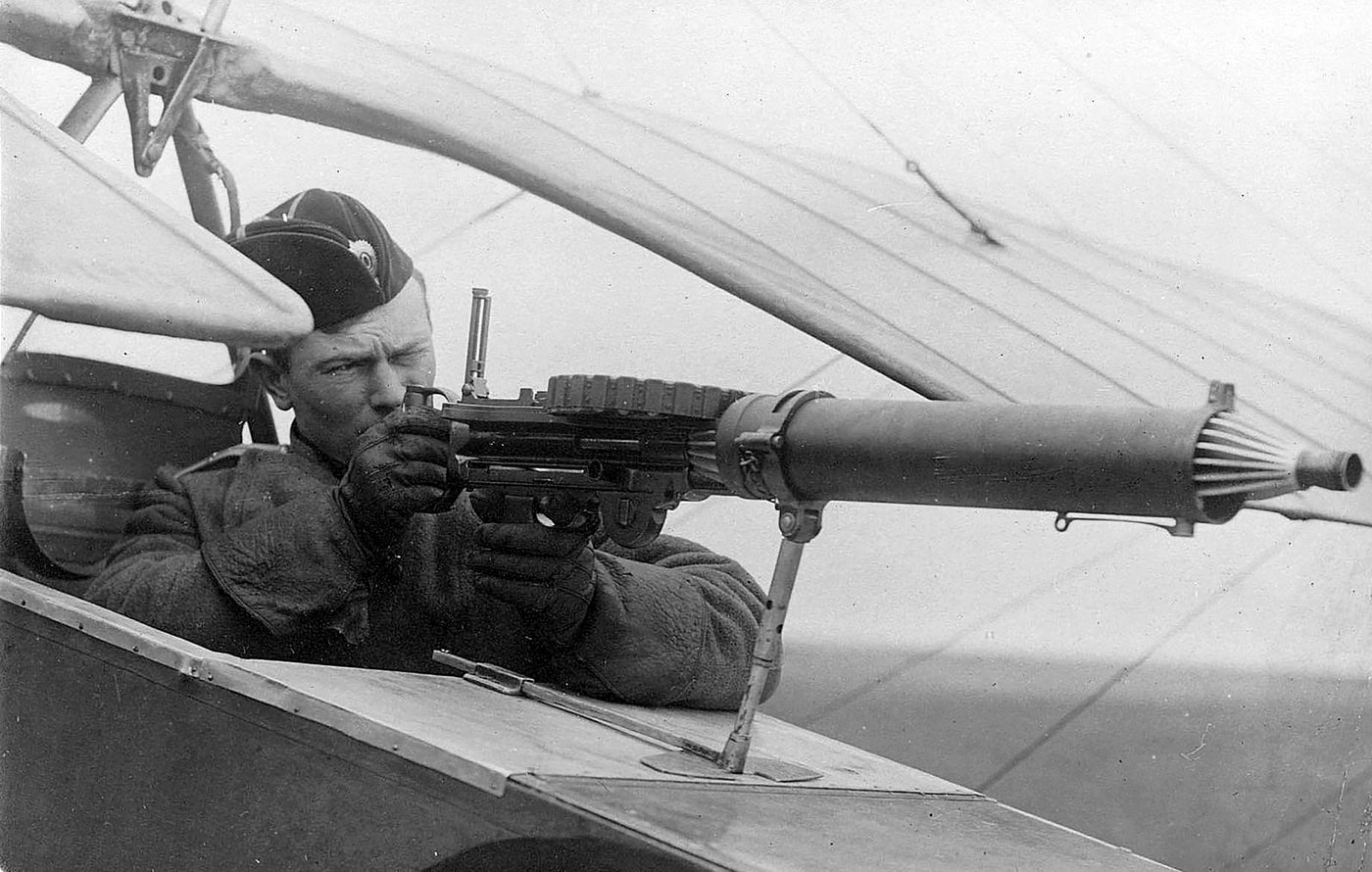
The Lewis was in high demand during World War I. This Lewis Mark I was mounted on a Russian Imperial Air Service Morane-Saulnier L airplane. Image: Viktor Kulikov
In a testament to its abilities, every Allied air force in Europe used the Lewis gun.
The British and French set out to solve the problem with advanced training.
Accuracy in the air was anyones guess experience and continuous training made the biggest difference.
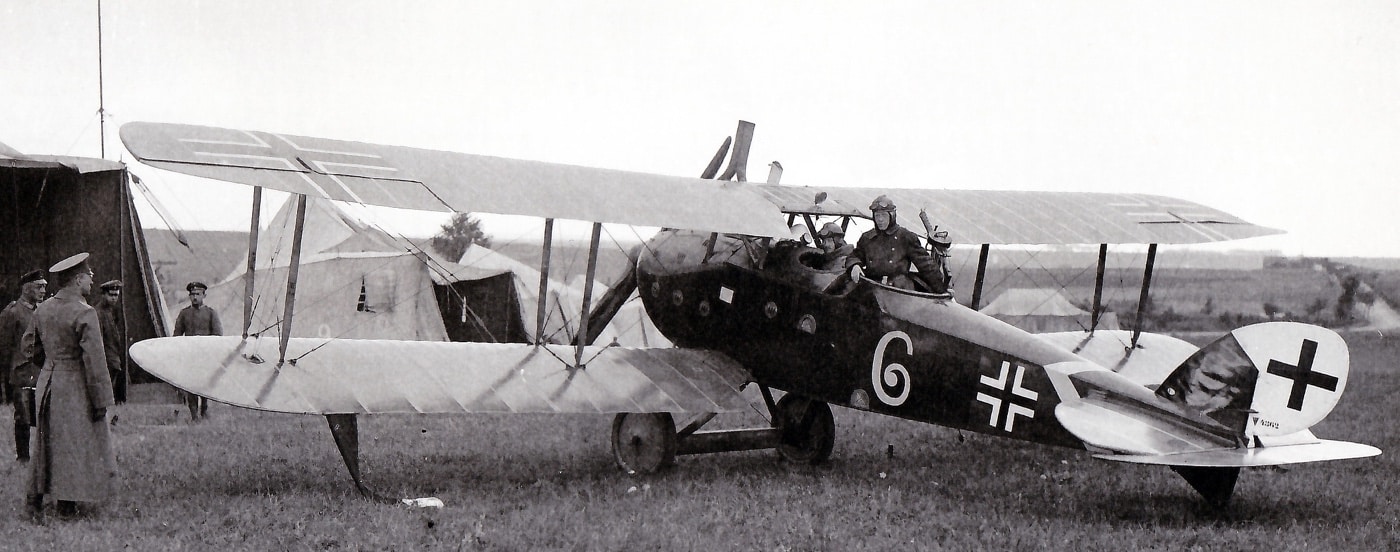
A German LVG C.VI reconnaissance plane with a captured Lewis gun mounted for the observer. Captured Lewis guns were very popular with the Germans. Image: NARA
Canvas Wings.
The air war in World War I has often been characterized as romantic, or even chivalrous.
Allied airmen climbed into fragile aircraft that most of us would not even taxi in today.
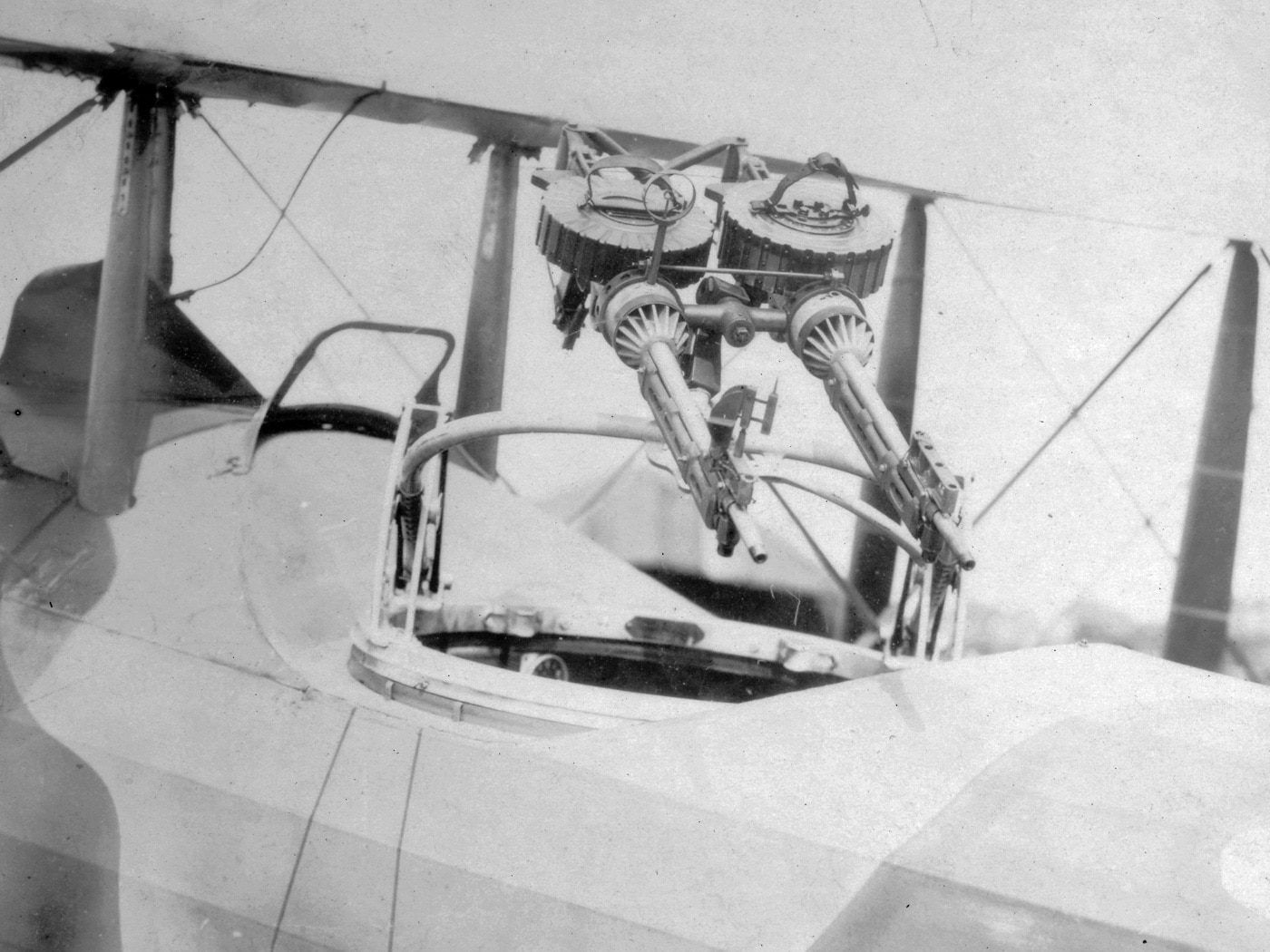
Twin Lewis guns on a Scarff mount aboard a French Salmson 4 AB.2 reconnaissance bomber. The guns are French-made Darne type. Author’s collection
Everything they learned, from training techniques to combat tactics was improvised, literally, on the fly.
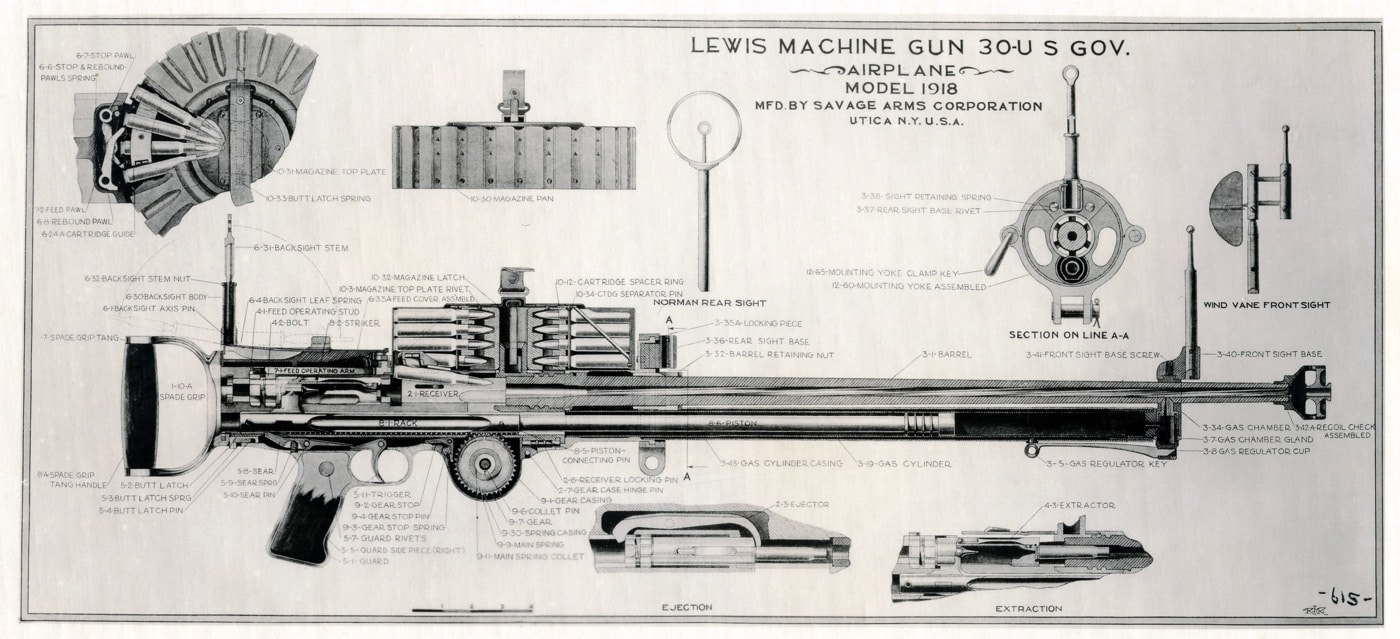
Shown is the diagram of the Lewis .30 caliber Airplane Model 1918 machine gun. It featured the recoil check (muzzle brake) common to the United States manufactured guns. Image: NARA

The Lewis gun remained in service after World War I as an observer and air defense gun. These Lewis machine guns are seen aboard a U.S. Navy flying boat during the Interwar Period. Image: NARA
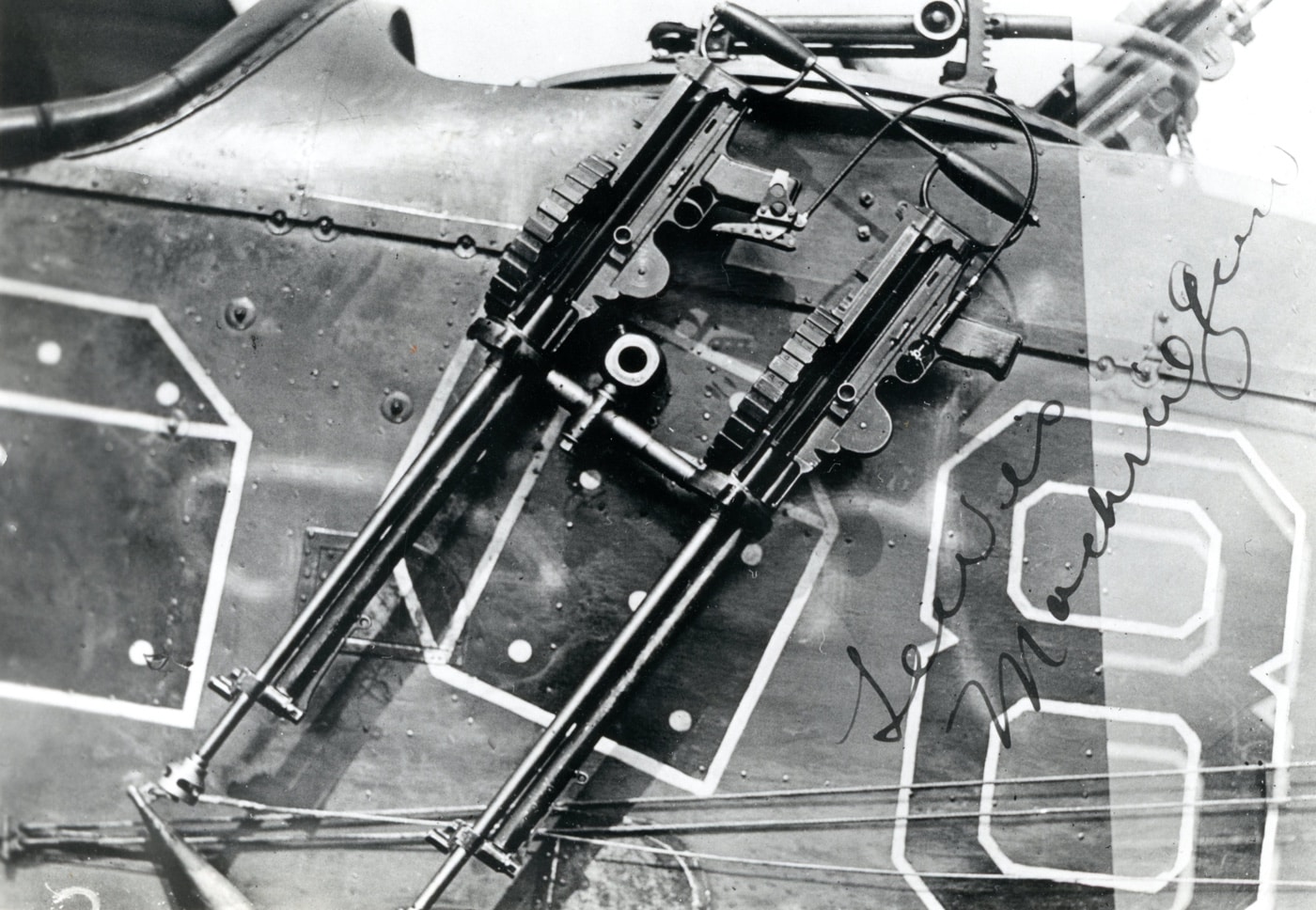
The Lewis gun could be mounted for trench strafing. These downward firing guns on an Airco DH.4 biplane daylight bomber were loaded by the observer and fired by the pilot. Image: Author’s collection




